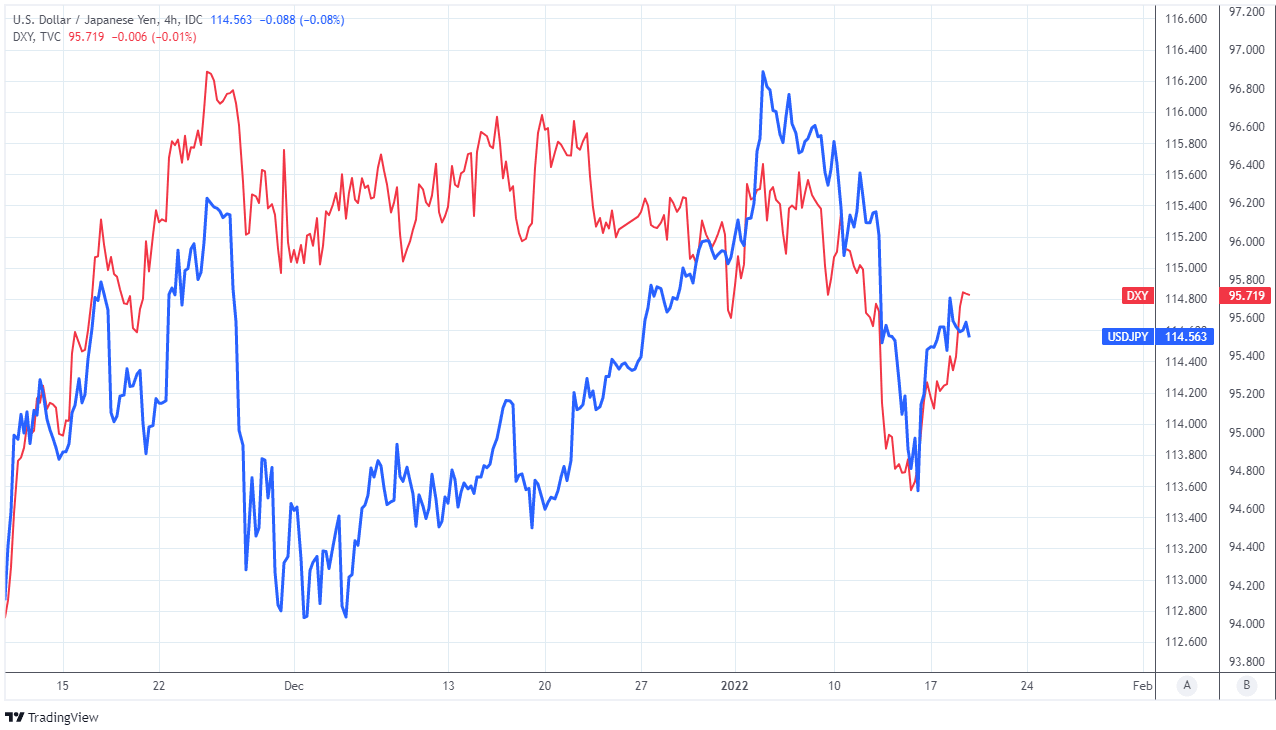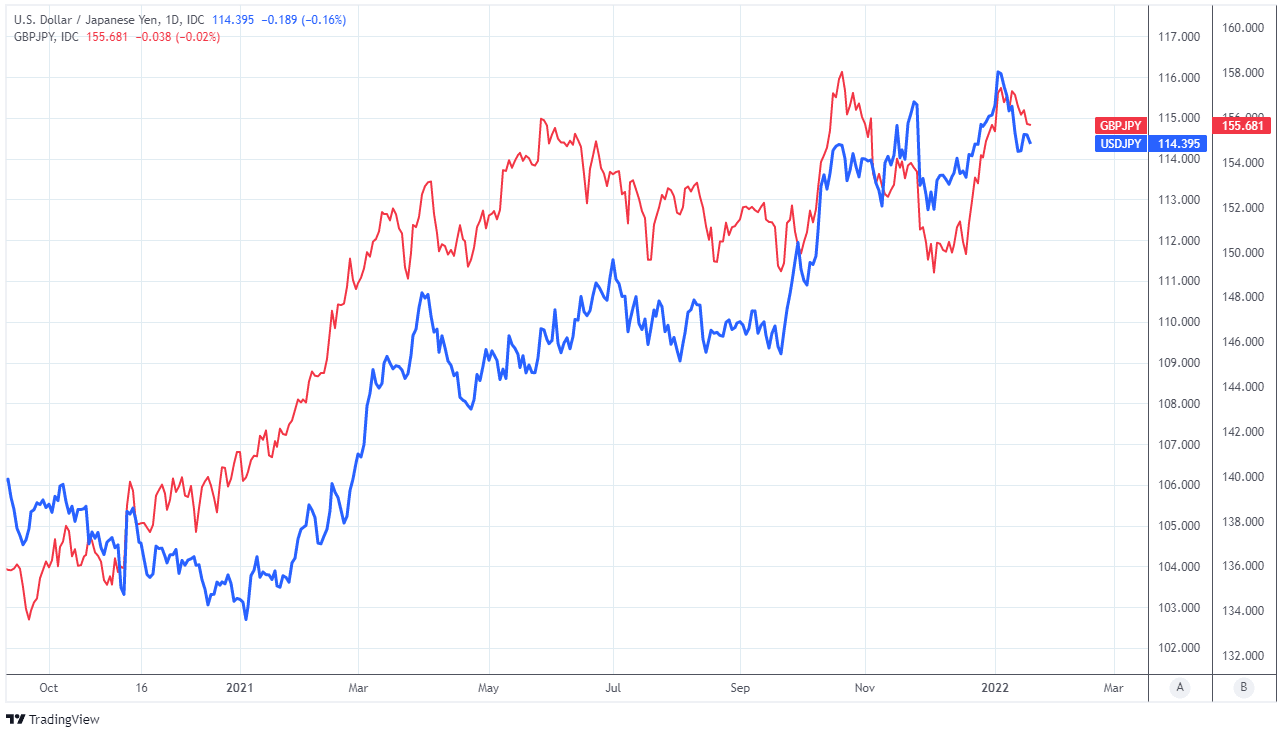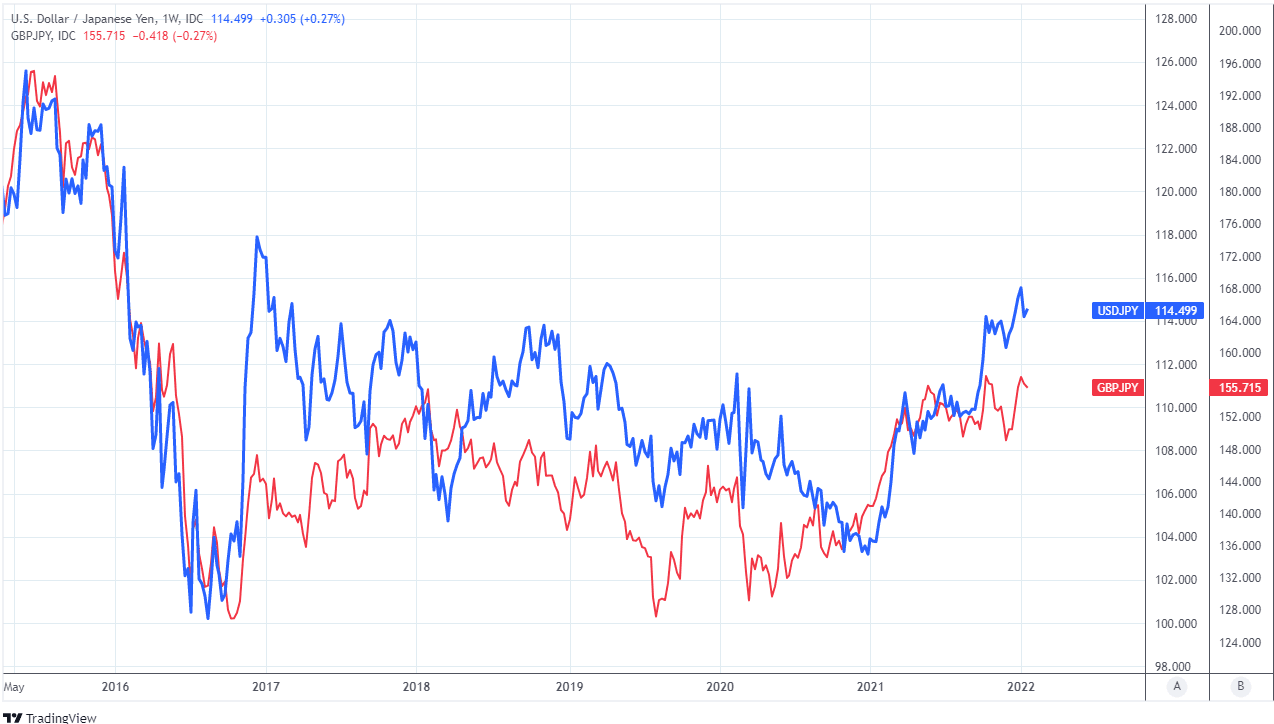Japanese Yen Sellers Eye 116+ in USD/JPY on BoJ’s Policy Stance
- Written by: James Skinner
- USD/JPY seen recovering 116 this January
- But could rise further to 120 later in 2022
- If Fed raises U.S. rates & oil rally goes on
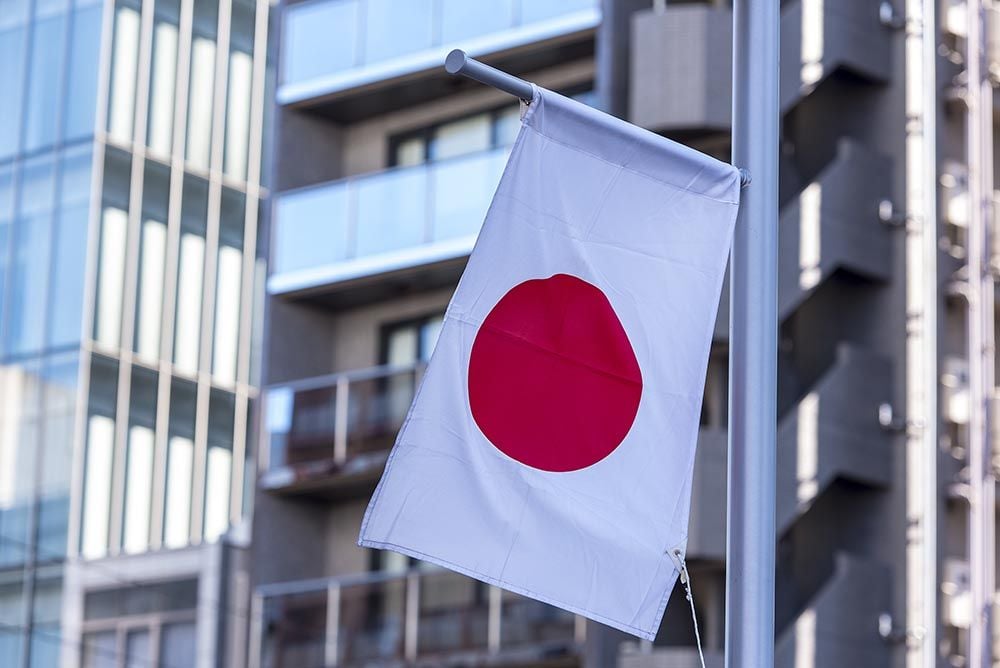
Image © Adobe Stock
The Japanese Yen remained an outperformer among major currencies at the midweek but strategists at BMO Capital Markets say it should fall to 116 against Dollar this month and that it could even decline as far as 120 later in the year due to Bank of Japan (BoJ) monetary policy.
Japan’s Yen was little changed against the Dollar on Wednesday and for the week overall after largely bucking a trend that has seen the U.S. currency advance strongly against other major counterparts like the Swiss Franc, Euro and Pound Sterling.
The Yen’s relative strength persisted even after the Bank of Japan quashed speculation that it may have been about to begin preparing markets for a partial withdrawal of the monetary stimulus it has provided the Japanese economy in a years-long and ongoing pursuit of its 2% inflation target.
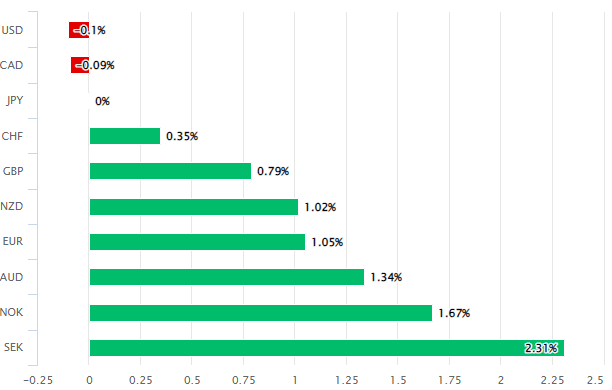
Above: Japanese Yen performance against G10 currencies in the week to Wednesday. Source: Pound Sterling Live.
“I am not thinking about changing monetary policy at all…We have not discussed a rate hike at all and cannot think of it at all,” BoJ Governor Haruhiko Kuroda said in a news conference following Tuesday’s monetary policy decision, according to a NIKKEI report.
In quashing hopes of a policy change Tuesday’s remarks from Governor Kuroda have confirmed and reinforced what many analysts perceive as a bleak outlook for the Yen, though most notably in relation to the Dollar and other currencies with central banks who’re looking to raise interest rates.
“Given this sentiment from the BoJ and the moves we've seen in oil and interest rate differentials, we continue to think that the natural direction for USDJPY is higher. Yes, positions are a little bit crowded, as we noted in our latest FX Positioning Report. But it is not like they are at record levels or in any way unsustainable given the carry that can be earned by holding JPY shorts,” says Greg Anderson, global head of FX strategy at BMO Capital Markets.
Above: USD/JPY shown at 4-hour intervals alongside U.S. Dollar Index.
The BoJ said this week that it will continue to expand the Japanese monetary base using its Quantitative and Qualitative Monetary Easing (QQE) with Yield Curve Control programme until its preferred measure of inflation exceeds and holds above the 2% target in a sustainable manner.
This is a bearish omen for the Yen because even after upgrading its forecasts on Tuesday, the BoJ expects that Japanese inflation will rise to only around 1.1% this year and anticipates that it will remain close to that level at the end of the bank’s projection period in late 2023.
“We continue to expect the BoJ to stick to their current policy framework until at least Governor Kuroda’s term ends next April. A view shared by Governor Kuroda himself in the accompanying press conference when he stated that there’s “no need to adjust monetary easing at all with current price outlook, and emphasizing that they will continue with easing persistently,” says Lee Hardman, a currency analyst at MUFG.
Above: USD/JPY shown at daily intervals alongside Pound to Yen exchange rate.
The BoJ’s inflation forecasts and stance in relation to its monetary stimulus suggest there’s almost no chance of a change in its interest rate this year or next, which leaves the Yen at a disadvantage and especially in light of monetary policy developments in the pipeline elsewhere in the world.
Most notably, the Federal Reserve is now widely expected to raise its interest rate on as many as four occasions this year in policy steps that would take the Federal Funds rate back up to 1% or more before the curtain closes on 2022, while the Bank of England (BoE) already lifted Bank Rate from 0.1% to 0.25% back in December and could raise it again as soon as February.
“We would be buyers of USDJPY at this present juncture and level, with a target of roughly 116 later this month. Given what Kuroda has said today, and given our increasing confidence that oil is going to average $80 or higher even with Fed normalization steps, we now think it is increasingly likely that USDJPY rallies to 120 at some point this year,” BMO Capital Markets’ Anderson wrote in a note on Tuesday.
Above: USD/JPY shown at weekly intervals alongside Pound to Yen exchange rate.
With the gulf between the BoJ and Federal Reserve set to widen, BMO Capital Markets’ Anderson suggested on Tuesday that USD/JPY could reach 116 this month and potentially even 120 later in 2022, which is an outlook that could also have bullish implications for the GBP/JPY rate too.
The GBP/JPY exchange rate always closely reflects the relative performance of the Yen and Pound when each is measured against the Dollar, and such that it would likely rise alongside USD/JPY unless in the interim the GBP/USD rate was to fall sufficiently to offset the Yen’s declines.
“USD/JPY’s recent clear failure to test the 117.00-level has provided a bearish technical signal for the pair in the near-term. We had assumed that US dollar positive momentum would get us there. That failure and the fact that the market was short JPY means the prospect of a quick rebound for USD/JPY is diminishing,” MUFG’s Hardman warned in a Tuesday research research note.

